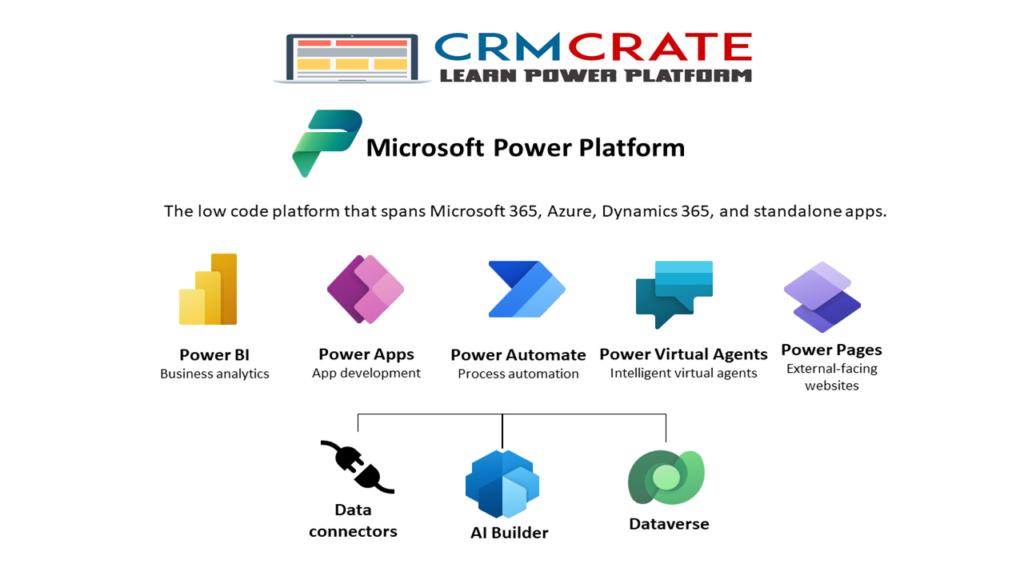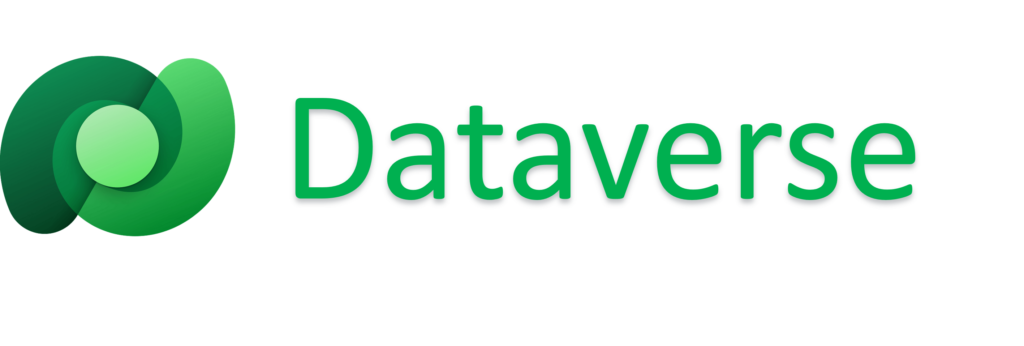In the dynamic realm of business technology, organizations continually search for inventive solutions to optimize processes, boost efficiency, and foster growth. Microsoft’s Power Platform stands out as a transformative force, providing an extensive set of tools that enable businesses to develop tailor-made applications, automate workflows, and analyze data. This blog post will explore the factors that set the Power Platform apart, highlighting why it excels over competing options.

What is Microsoft Power Platform?
Microsoft Power Platform is a suite of business application development tools and services developed by Microsoft. It consists of several key components or modules that work together to empower organizations to create custom applications, automate workflows, and analyze data. Below are the main components of the Power Platform.
Power BI
Microsoft Power Platform is a suite of business application development tools and services developed by Microsoft. It consists of several key components that work together to empower organizations to create custom applications, automate workflows, and analyze data.

Below are some key features of Microsoft Power BI:
- Connectivity to Data: Power BI facilitates linking with an extensive collection of data sources, encompassing databases, online services, Excel files, and beyond. This adaptability empowers users to import and scrutinize data from diverse platforms.
- Power Query: This aspect of Power BI allows users to refine, modify, and structure their data prior to analysis. It presents an intuitive interface for preparing data, simplifying tasks like filtering, sorting, and merging tables.
- Data Modeling: In Power BI, users can establish connections between diverse data tables, formulate calculated columns and measures through Data Analysis Expressions (DAX), and construct a resilient data model for in-depth analysis.
- Data Visualization: Power BI provides an extensive array of visualization choices, encompassing charts, graphs, maps, tables, and additional options. Users have the ability to craft interactive and dynamic reports and dashboards, ensuring the effective communication of insights.
- Power BI Desktop: This desktop application serves as the primary tool for building and designing reports and dashboards. It includes features for data preparation, modeling, and visualization.
- Power BI Service: The cloud based service permits users to publish, share, and collaborate on Power BI reports and dashboards. It enables real-time collaboration, the exchange of insights, and the accessibility of reports from any device with internet connectivity.
- Power BI Mobile: Mobile applications for iOS, Android, and Windows platforms enable users to access and interact with their reports and dashboards on the go.
- Power BI Embedded: Developers can use this feature to embed Power BI reports and dashboards into custom applications, providing a seamless integration of analytics capabilities within existing software.
- Natural Language Query: Users have the ability to inquire about their data using everyday language, and Power BI will generate visualizations in response to the query. This functionality streamlines the extraction of insights, catering to users with diverse levels of technical expertise.
- Power Automate Integration: Users can automate workflows by integrating Power BI with Microsoft Power Automate, streamlining processes and enhancing efficiency.
Power Apps
Power Apps is a Microsoft’s product which provides a low-code/no-code application development platform that allows users to create custom business applications without extensive coding expertise. It is part of the Microsoft Power Platform, which also includes Power BI and Power Automate (which is formerly known as Microsoft Flow). Microsoft Power Apps enables individuals, even those with limited programming skills, to build apps tailored to their specific business needs.

Below are some key features of Microsoft Power Apps:
- Low-Code / No-Code Development: Microsoft Power Apps offers a visual development environment with drag-and-drop feature, reducing the need for conventional coding. This makes app development more accessible to a broader audience within an organization.
- Pre-Defined App Templates: Within Power Apps, users have access to a diverse range of pre-defined templates that can be personalized for typical business situations. These templates act as initial frameworks for developing applications associated with functions like project management, inventory tracking, or employee onboarding.
- Seamless Data Integration: Power Apps has the capability to establish connections to an extensive array of data sources, encompassing Microsoft 365, SharePoint, Dynamics 365, and various external services and databases. This empowers users to utilize existing data and integrate it seamlessly into their applications.
- Fluent & Responsive Design: Power Apps supports responsive design, ensuring that applications work well on different devices and screen sizes. This adaptability is essential for creating user-friendly and accessible apps.
- AI Builder: Microsoft Power Apps includes AI Builder, which enables users to add artificial intelligence features to their business applications without advanced programming knowledge. This includes features like object detection, sentiment analysis, and form processing.
- Dataverse: Power Apps often leverages the Dataverse which formerly know as Common Data Service (CDS), a cloud-based data storage and modeling platform. It provides a standardized and scalable data structure for apps, ensuring consistency and interoperability.
Power Automate
Power Automate, formerly known as Microsoft Flow, is a cloud-based service and low-code automation tool that enables users to automate workflows and tasks across various applications and services. It is a part of the Microsoft Power Platform, along with Power BI and Power Apps. Power Automate allows individuals to create automated processes, known as flows, without the need for advanced coding skills.

Below are some key features of Microsoft Power Automate:
- Ready To Use & Custom Connectors: Power Automate supports a vast array of connectors, allowing users to integrate with numerous applications, services, and platforms. Popular connectors include Microsoft 365, SharePoint, OneDrive, Salesforce, and many others, facilitating seamless data exchange between different systems.
- Pre-Defined Templates: Power Automate offers a pre-defined collection of ready-made templates designed for typical business processes and scenarios. Users can utilize these templates as initial frameworks and tailor them to suit their specific requirements, expediting the creation of workflows.
- Visual Designer: The platform provides an intuitive visual designer, allowing users to create workflows using a drag-and-drop interface. This accessibility caters to users with diverse levels of technical expertise, removing the necessity for extensive coding.
- Triggers and Actions: Flows in Power Automate are constructed using triggers that initiate workflows and actions that define specific tasks. Users can set up conditional logic and control the flow of automation based on various conditions, creating dynamic and responsive workflows.
- Approval Workflows: Power Automate enables users to create approval workflows, simplifying processes that require obtaining approvals for documents, requests, or other business-related activities. Approvers can receive notifications and provide responses directly within the workflow.
- Data Operations: Users can perform various data operations within their workflows, such as creating, updating, and deleting records in different systems. This capability enables comprehensive data management as part of the automated processes.
- Scheduled Flows: With Power Automate, you can schedule workflows to automate tasks at specific times or intervals. This proves particularly handy for tasks that require regular execution, like performing data backups or generating reports.
- Cloud and On-Premises Support: Power Automate is flexible, accommodating both cloud-based and on-premises solutions. This adaptability is beneficial for organizations with diverse IT environments, enabling them to automate processes irrespective of their infrastructure.
- Mobile Accessibility: Users can access and manage their flows through the Power Automate mobile app, providing flexibility and control over workflows even when on the go.
Power Virtual Agent / Microsoft Copilot Studio
Power Virtual Agents allows individuals to create chatbots and virtual agents without extensive coding knowledge. With Power Virtual Agents, users can design and deploy intelligent bots that can engage with users, answer questions, and perform tasks through a conversational interface. The functionalities and attributes of Power Virtual Agents have been integrated into Microsoft Copilot Studio as a result of substantial investments in generative AI and improved integrations across the Microsoft Copilot platform.
With Microsoft Copilot Studio, you have the ability to craft effective AI-driven copilots that cater to a variety of requests. Whether it’s offering straightforward responses to common questions or addressing complex issues through intricate conversations, this platform allows engagement with customers and employees in numerous languages. You can seamlessly connect with your audience across different channels, including websites, mobile apps, Facebook, Microsoft Teams, or any platform supported by the Azure Bot Framework.

Below are some key features of Microsoft Power Virtual Agent:
- No-Code/ Low-Code Development: Power Virtual Agents is created with users in mind, accommodating a range of technical proficiency. With its visual, no-code/low-code interface, it simplifies the process of crafting chatbots, making it user-friendly and accessible even to those without extensive programming skills.
- Pre-Defined Templates: The platform provides a range of pre-built templates for common scenarios, serving as starting points for chatbot creation. Users can customize these templates to fit their specific needs, saving time and effort in the development process.
- AI Capabilities: The platform integrates artificial intelligence (AI) features, empowering users to enrich their chatbots with natural language understanding (NLU) and sentiment analysis. This enhancement boosts the bot’s capacity to comprehend and respond contextually to user inputs.
- Bot Analytics Support: The platform provides analytics and insights into bot performance. Admins can track user interactions, identify frequently asked questions, and make data-driven improvements to their chatbots.
- Multi-Language Support: Users have the ability to interact with customers and employees in various languages, ensuring that the chatbots are accessible to a diverse audience.
- Deployment: Makers can easily publish and deploy their chatbots to various channels, including websites, Microsoft Teams, mobile apps, Facebook, or any channel supported by the Azure Bot Framework.
- Adaptive Cards Integration: Power Virtual Agents allows integration with Adaptive Cards, enabling the creation of interactive and dynamic card-based experiences within the chatbot interface.
- Custom Connectors: Users can create custom connectors to integrate with external services and systems, expanding the capabilities of their chatbots.
Power Pages
Microsoft Power Pages is a reliable and secure platform designed for businesses to easily create, host, and manage external-facing websites. Whether you’re a low-code enthusiast or an experienced developer, Power Pages gives you the ability to quickly design, set up, and publish websites that are compatible with various web browsers and devices.
Power Pages comes equipped with versatile and customizable templates, a user-friendly design studio for a seamless visual experience, and an integrated learning hub—everything you need to swiftly create websites tailored to your specific business requirements. As the latest addition to the Microsoft Power Platform family, Power Pages allows you to construct sites using the same shared business data stored in Microsoft Dataverse. This aligns with your use of shared data for building apps, workflows, virtual agents, reports, and analytics, ensuring cohesion across various Microsoft Power Platform components within your organization.

Below are some key features of Microsoft Power Pages:
- Streamlined Content Creation: Effortlessly generate new websites right from the Power Pages home page. You can opt for the default template for a swift start or select from a variety of industry-specific starter templates.
- Enhanced Design studio: You can build a powerful & engaging website without writing single piece of code. The enhanced design studio provides page workspaces for designing webpages, styling workspace for applying wide range of styles & themes to your site and data workspace for creating / modifying Microsoft Dataverse tables in data-driven web applications.
- Responsive Web-Rendering: Power Pages utilizes Bootstrap, ensuring your websites are naturally responsive, mobile-friendly, and adaptable to different screen sizes and devices.
- Advanced Development Properties: Collaborate with professional developers in fusion teams to enhance functionality. Utilize tools like Visual Studio Code and the Microsoft Power Platform CLI to craft robust business application websites.
- Security and governance: The foundational strength of Power Pages lies in its built-in security. It enables organizations to securely grant access to their business data for users—whether internal or external—through the implementation of authorization rules within Power Pages.
Dataverse
Microsoft Dataverse is a cloud-based data platform provided by Microsoft as a part of the Power Platform. It serves as a central and scalable data storage solution that allows organizations to securely store and manage data used by business applications. Dataverse was previously known as the Common Data Service (CDS). Dataverse provides a secure means to store and oversee data utilized by business applications. Within Dataverse, data is organized and stored in a form of tables.

Below are some key features of Microsoft Dataverse:
- Structured Database: Microsoft Dataverse provides a structured and scalable database where businesses can store and organize their data. It supports relational data models, allowing for the creation of tables, fields, and relationships between them.
- Common Data Model (CDM): Dataverse aligns with the Common Data Model, offering a standardized and uniform approach to representing and sharing data throughout the Microsoft ecosystem’s diverse applications and services.
- Security and Access Control: Dataverse includes strong security features, enabling organizations to manage access to their data. It facilitates role-based security, ensuring that users possess the necessary permissions aligned with their roles within the organization.
- Business Logic and Validation Rules: Dataverse enables the implementation of business logic and validation rules, ensuring that data meets specific criteria and adheres to defined business rules.
- Super Connectivity: Dataverse supports integration with a variety of external systems and services, allowing businesses to connect and exchange data with other applications.
- Data Versioning: Dataverse includes versioning capabilities, allowing organizations to track changes to data over time.
- Scalability: Dataverse is designed to be scalable, accommodating the growth of data and the increasing complexity of business applications.
- Data Governance: Dataverse includes features for data governance, allowing organizations to define and enforce policies related to data quality, privacy, and compliance.
In a nutshell, Microsoft Power Platform is a game-changer for businesses. It’s not just about creating apps or analyzing data; it’s a transformative tool that empowers both tech-savvy developers and non-technical users to collaborate and innovate. From Power BI’s insightful visualizations to Power Apps’ intuitive app-building capabilities, and Power Automate’s workflow automation, the platform simplifies complexities. Its strength lies in its adaptability, seamlessly connecting data across applications and fostering a culture of agility and efficiency. As organizations embrace the Power Platform, they discover a versatile ally in their journey toward digital transformation, equipped to tackle challenges, streamline processes, and propel innovation.






[…] Power FX is a low-code language specifically designed for building apps within the Microsoft Power Platform ecosystem. With Power FX, you can do things like make your app react to user input, perform calculations, and […]
[…] Learn more about Microsoft Power Platform […]
[…] AI Builder, a functionality within the Microsoft Power Platform, you have the capability to develop and employ AI models tailored to enhance your business […]
Your article helped me a lot, is there any more related content? Thanks!